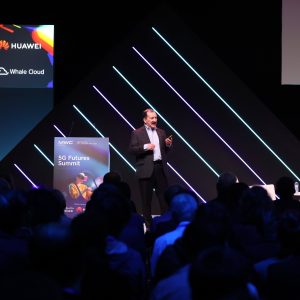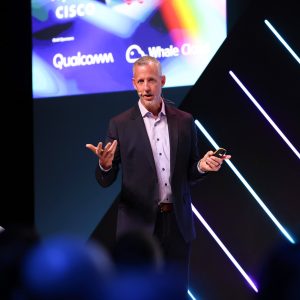Speakers at 5G Futures Summit outline rollout of network APIs, edge compute and private networks
Mobile operators now have the tools to help enterprises achieve digital transformation. That was one of the key messages delivered by speakers at the 5G Futures Summit, which highlighted the growing momentum behind standardised application programming interfaces (APIs), edge compute capabilities and private network propositions.
Drawing on the GSMA’s Open Gateway initiative, Telefónica, for example, has commercially launched APIs in Brazil, Spain and Germany in conjunction with other operators in those markets. At the summit, which was hosted by the GSMA at MWC Barcelona, David Del Val Latorre, Director of Open Gateway at Telefónica, pointed to strong demand from enterprises for network APIs. “In Brazil, we had Itaú and other banks asking for the product and even TikTok was saying: I need to verify the numbers of our customers, so come on, give me an API,” he recalled.
In Germany, Deutsche Telekom is working with Microsoft to enable Siemens Energy to employ APIs to request a temporary high quality connection for engineers using mixed reality headsets to fix wind turbines. Nathan Rader, VP Service and Capability Exposure at Deutsche Telekom, described how the operator community is now working with channel partners to coordinate the availability of standardised network APIs.
On that theme, Ross Ortega, VP of Product Management, Azure for Operators at Microsoft, cautioned operators releasing network APIs not to “differentiate on day one – the power that we get is by standardisation…developers are not looking to write an app on a given network, they just want it to work on all networks.”



Demand from different sectors and regions
Developers have long had easy access to compute and storage capacity. Now is the time to do the same for networks, said Savinay Berry, EVP, Product and Engineering at Vonage. He anticipates strong demand from developers for quality-on-demand, location data, SIM swap information and other network capabilities. He explained how cell-ID triangulation can be used to determine a device’s location as an alternative to putting a power-hungry GPS chip in the device.
Demand for network APIs spans both developed and developing markets. Chenosis, a unit of MTN, is working with cities across Africa to explore how private and public 5G networks, linked by APIs, could support a wide range of use cases, across identity, transport, security, health and e-commerce. “Camara[1] and Open Gateway is core to what we are doing,” Saad Syed, CEO of Chenosis, told the event.
Progress on both private networks and edge compute
The Summit heard how the cost of private networks is coming down dramatically, as competition kicks in. Demand for private networks is also being driven by enterprises’ need for both privacy and performance, noted Andrea Calvi, Head of Technology Evolution and Innovation at TIM. At the same time, operators are looking to leverage their central offices and other local infrastructure to provide enterprises with edge compute capabilities that will complement private networks.
Along with counterparts from Telefónica and Deutsche Telekom, Andrea Calvi outlined the EU-backed IPCEI CIS project, which involves 100 companies from 12 member states. “What we are doing, in short, is to provide an infrastructure, creating a data continuum from data centres for non-critical services… reaching the edge computing location for real time critical services,” he explained, adding that trials of live infrastructure will begin this year, ahead of a likely commercial launch within two years.
The IPCEI CIS project will change the industry, predicted Juan Carlos Garcia, SVP Technology Innovation and Ecosystem at Telefónica. Although the initial deployments will be in Europe, the intention is to take the concept global, he added, explaining that developers will be able to harness the new edge infrastructure through APIs published in Camara.
As the telco edge can support very low latency connectivity, Lara Grohe, Project Management IPCEI CIS for DTAG, said the technology will support a wide range of use cases across industry. She explained that operators “need to be able to compete with hyperscalers, but also to possibly combine with a hyperscaler solution, depending on what the customer wants and what the conditions are.”



Indeed, making it simple and straightforward for developers and enterprises is absolutely critical, stressed Bob Everson, Senior Director, Provider Mobility at Cisco. “Everything needs to work together,” he added. “This is been really difficult… as we initially bring cellular technologies into the enterprise.” Still, 5G “has a unique space and it has a unique value that’s actually worth paying for,” Bob Everson added. “And enterprises are getting this.”
[1] Camara is an open source project within Linux Foundation to define, develop and test the APIs
